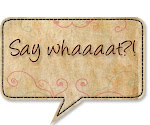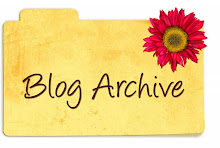I consider vinegar as one of the staple things in my kitchen. It’s not only used for cooking but around the house as well. Here are some of the amazing things it does:
Steam-clean your microwave
To clean your microwave, place a glass bowl filled with a solution of 1/4 cup vinegar in 1 cup water inside, and zap the mixture for five minutes on the highest setting. Once the bowl cools, dip a cloth or sponge into the liquid and use it to wipe away stains and splatters on the interior.
Disinfect cutting boards
To disinfect and clean your wood cutting boards or butcher block countertop, wipe them with full-strength white vinegar after each use. The acetic acid in the vinegar is a good disinfectant, effective against such harmful bugs as E. coli, Salmonella, and Staphylococcus. Never use water and dishwashing detergent, because it can weaken surface wood fibers. When your wooden cutting surface needs deodorizing as well as disinfecting, spread some baking soda over it and then spray on undiluted white vinegar. Let it foam and bubble for five to ten minutes, then rinse with a cloth dipped in clean cold water.
Deodorize your garbage disposal
Here's an incredibly easy way to keep your garbage disposal unit sanitized and smelling clean: Mix equal parts water and vinegar in a bowl, pour the solution into an ice cube tray, and freeze it. Then simply drop a couple of "vinegar cubes" down your disposal every week or so, followed by a cold-water rinse.
Cut the grease
Every professional cook knows that distilled vinegar is one of the best grease cutters around. It even works on seriously greasy surfaces such as the fry vats used in many food outlets. But you don't need to have a deep fryer to find plenty of ways to put vinegar to good use:
When you're finished frying, clean up grease splatters from your stovetop, walls, range hood, and surrounding countertop by washing them with a sponge dipped in undiluted white vinegar. Use another sponge soaked in cold tap water to rinse, then wipe dry with a soft cloth.
Pour 3-4 tablespoons white vinegar into your favorite brand (especially bargain brands) of liquid dishwashing detergent and give it a few shakes. The added vinegar will not only increase the detergent's grease-fighting capabilities, but also provide you with more dishwashing liquid for the money, because you'll need less soap to clean your dishes.
Boiling 2 cups vinegar in your frying pan for 10 minutes will help keep food from sticking to it for several months at a time.
Remove burned-on grease and food stains from your stainless steel cookware by mixing 1 cup distilled vinegar in enough water to cover the stains (if they're near the top of a large pot, you may need to increase the vinegar). Let it boil for five minutes. The stains should come off with some mild scrubbing when you wash the utensil.
Get that blackened, cooked-on grease off your broiler pan by softening it up with a solution of 1 cup apple cider vinegar and 2 tablespoons sugar. Apply the mixture while the pan is still hot, and let it sit for an hour or so. Then watch in amazement as the grime slides off with a light scrubbing.
Got a hot plate that looks more like a grease pan? Whip it back into shape by washing it with a sponge dipped in full-strength white vinegar.
Fight grease buildups in your oven by wiping down the inside with a rag or sponge soaked in full-strength white vinegar once a week. The same treatment gets grease off the grates on gas stoves.
Clear the air in your kitchen
If the smell of yesterday's cooked cabbage or fish stew is hanging around your kitchen longer than you'd like, mix a pot of 1/2 cup white vinegar in 1 cup water. Let it boil until the liquid is almost gone. You'll be breathing easier in no time.
Make all-purpose cleaners
For fast cleanups around the kitchen, keep two recycled spray bottles filled with these vinegar-based solutions:
For glass, stainless steel, and plastic laminate surfaces, fill your spray bottle with 2 parts water, 1 part distilled white vinegar, and a couple of drops of dishwashing liquid.
For cleaning walls and other painted surfaces, mix up 1/2 cup white vinegar, 1 cup ammonia, and 1/4 cup baking soda in 1 gallon (3.7 liters) water and pour some into a spray bottle. Spritz it on spots and stains whenever needed and wipe off with a clean towel.
If you’re worried about that stinky smell, well don’t worry, ‘coz once vinegar dries its smell is gone.














2 comments:
Thanks for the tips. Vinegar is so versatile that it makes me wonder why it is still so relatively inexpensive. Not that I'm complaining, mind you. Just curious why it doesn't cost more.
I love vinegar! Be it normal white vinegar, italian balsamico or japanese kinkman - food doesn't taste that good without it. I can literally add it to almost anything.
I never thought of wasting my vinegar for the purposes described above, but sounds like a useful substance for kitchen. Perhaps I don't take care of the kitchen, that's why. Anyway - Amazing vinegar!
Post a Comment